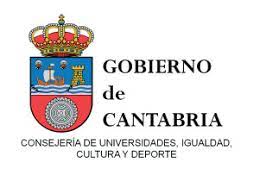The Comedia Between Worlds: Critical Intersections in Early Modern Theatre
Keywords:
Baroque comedy, Golden Age, Theatrical performance, Literary adaptation, PostmodernitySynopsis
Perhaps today more than ever, with the much-needed rise of postcolonial studies and an urgent look towards the multicultural, the intersectional and the interdisciplinary, it is difficult for many scholars to consider comedy as a vital and constantly regenerating genre within studies. . current Hispanics. However, if we do not do so, we run the risk of relegating to the background a unique dramatic tradition of singular richness that left a permanent mark on the society of the time on an artistic and sociocultural level. Indeed, Spain in the 17th century drank from the stage both in its peak moments and in the most acute social crises. Court theater and paratheatrical shows were the center of tributes that left their mark on that nationalist and exclusivist History with a capital H. But, on the other hand, the theater of the Golden Age was also at the service of other miles of stories of men and women who took refuge in this entertainment from the evils that stalked them in their daily lives. The globalized era in which we live invites us to reflect on how this theater was also global for its time due to how much it covered on a thematic level and the influence it had outside the borders of the Peninsula. Proof of this is that, even today, comedy has not stopped reinventing itself and renewing itself to appeal to different causes. The works in this volume vindicate the different worlds that baroque theater encompasses and that position this genre beyond a museum theater and contribute to defining comedy as a vital act in constant regenerative change.
Chapters
-
Biographies
-
Introduction. The comedy between worlds or the worlds of comedy
-
The wall and the moat in Cervantes' Numancia: a look at the humanity of the other
-
Dissidence and identity in a pig comedy: La prudente Abigail by Antonio Enríquez Gómez
-
The Comedia between Two Worlds: Casting Race in Antonio de Zamora’s El hechizado por fuerza (1697)
-
Thinking through Embodiment, Gender, and Adaptation in Fuerza de la costumbre and Its Reimaginings
-
Reconstructing Relationships of Desire: Homosexuality in Spanish Golden Age Theater
-
“Pues que no estás en el oro, o contento, ¿dónde estás?”: Gold and Melancholy in Spanish and English New World Drama
-
“Notable melancolía”: Writing American Illness from Imperial Spain in Calderón’s La aurora en Copacabana
-
Comedy came: nineteenth-century readings of baroque theater in Argentina and Chile
-
Calderón Onstage in Spanish Florida: Context, Text, and Reconstruction
-
American Sueño
-
Be My Guest: The World of Home and the Political Sphere in Lope de Vega’s El villano en su rincón
-
Recursive Theater: Performance and Captivity in Miguel de Cervantes’s El trato de argel (1582)
-
Ghosts across Borders: Don Juan de Castro and His Grateful Dead
-
Inside or Outside?: Freedom vs. Security in Por el sótano y el torno
-
Behind The Veil: Antonio Enríquez Gómez, Kabbalah, and The Immaculate Conception
-
Marking Time: Framing The Comedia Between the 16th And 21st Centuries
-
Music and Performance In the INAEM/CNTC Production of Luís Vélez De Guevara’s La serrana de La Vera
-
The Golden Age in Tik-Tok






